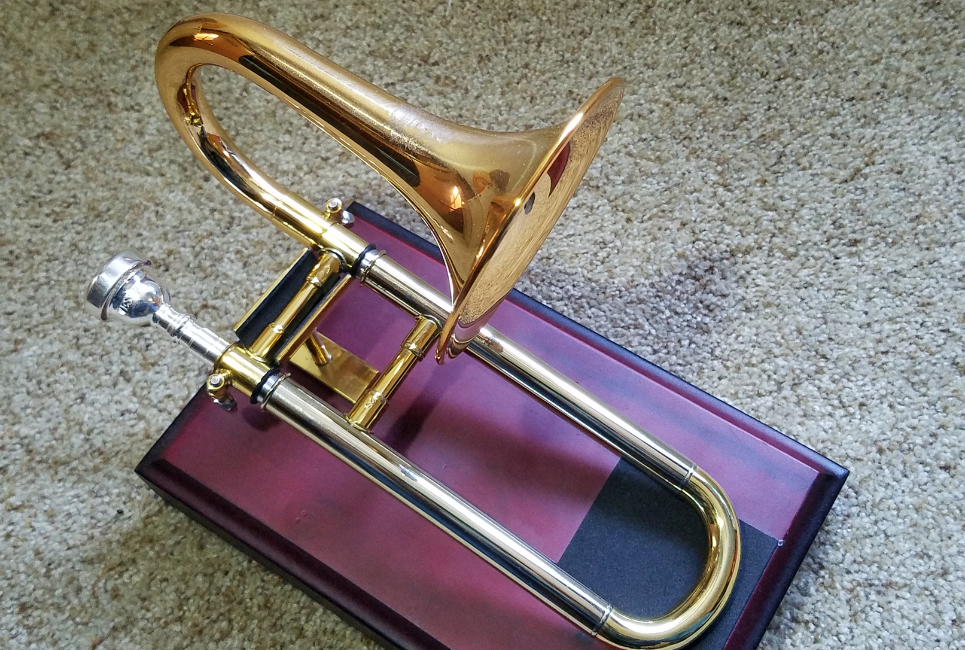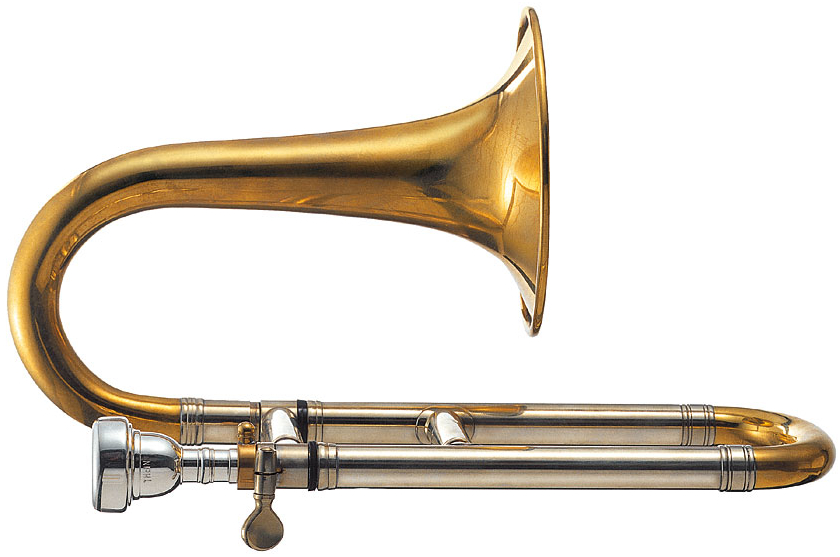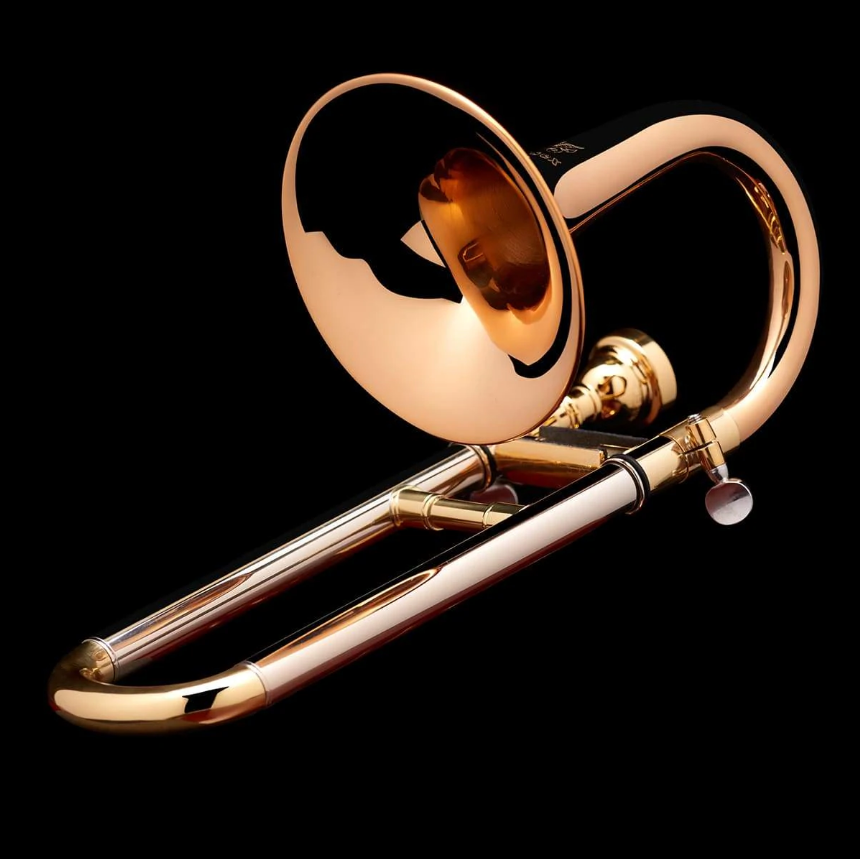- How to Find the Best 5 String Violins - April 19, 2022
- Top Violin Accessories to Consider - April 18, 2022
- Best Left-Handed Violins Guide - April 13, 2022
Summary: Knowing how to find the best piccolo trombone means deciding what genre of music you will play and what material you want.
If you love the trombone but want to try something different, it might be time to learn how to find the best Piccolo trombone. The trombone family has many members, but the piccolo is the smallest. It has the same type of mouthpiece as a trumpet. If you have any experience playing other trombones, this might be another instrument you can add to your repertoire.
Bottom line upfront
I will be honest, you do not have nearly as much competition when deciding which brand to buy. There are two leading Piccolo trombones manufacturers, and both are European. I genuinely like both, but I prefer Thein only because it is a German company, and German manufacturing is notoriously held to higher standards than other countries.
Selection Criteria
Each of the piccolo trombones selected is based on the manufacturing quality, the size, and the sound the piccolo trombone produces. Because it is the smallest of the trombone family, there are not as many manufacturers, but those who specialize in the piccolo trombone offer reliable products.
What Is the Piccolo Trombone?
The piccolo trombone is a member of the trombone family. It uses the same trumpet mouthpiece but has a much higher pitch, usually a higher Bb. Physically, it is the smallest. Still, because it uses the same trumpet mouthpiece, many brass instrumentalists who played the trumpet also take on the challenge of the piccolo trombone because it is an easy switch.
This video might not have the best quality, but it certainly gives a great snippet of the piccolo trombone at its best:
Parts of the Piccolo Trombone
Piccolo trombones have the same parts as a larger trombone, so they have the inner slide tubes, the outer slide tubes, the valves, the bell, and the mouthpiece.
The bell and bore sizes are essential to note as they impact the design and quality of sound you get. The bell diameter is usually 4 inches or 10 centimeters for a piccolo trombone. The bore size is generally between 0.430 and 0.400 inches.
- Thicker bore sizes mean a thicker tubing diameter. The thicker the size, the bigger the breath you need to fill the tubing and play.
- Thinner (or smaller) bore sizes mean a thinner tubing diameter. The thinner the size, the smaller the breath you need to fill the inner tubing and play.
Note: As this is a piccolo trombone, it has the smallest amount of tubing compared to any trombone, which means the required air for a thick or thin diameter is marginal.
The piccolo trombone is tiny but is it suitable for smaller children who do not necessarily have a lot of breath control but want to be able to start developing that core technique so that they can play brass instruments of a larger caliber later. In fact, the small piccolo trombone gives them the chance to develop skills like holding the instrument and playing it appropriately while also laying the groundwork for musical breathing techniques that many people take for granted.
Of course, you can play the piccolo trombone as an adult, and many adults do. It is very popular for people who already play a brass instrument like a tenor trombone or the trumpet because it is an effortless switch. If you are switching from another instrument, consider getting a thicker diameter because you get a bolder sound and increased projection, something you will likely need when playing with other performers.
Material for the Piccolo Trombone
The piccolo trombone is a brass instrument. It is called that because it is made with brass. Brass is a combination of copper and zinc alloy. From this combination, you get the bright, shiny surface of a brass instrument. However, there are differences in the amount of zinc to copper used to make the tubing. These differences determine the timbre of the music you get. You can order a gold brass from Wessex or a yellow brass from Thein with the piccolo trombone.
| Material | Composition | Quality of Tone |
| Yellow brass | 30% zinc + 70% copper | Bright, forceful timbre |
| Gold brass | 15% zinc + 85% copper | Wide, full timbre |
Surface Finish
You have two options for the surface finish with a piccolo trombone: gold or clear. Thein has a clear, lacquered finish, so the yellow brass shows through, but Wessex has the gold lacquer finish. The finish can always be re-lacquered once it breaks down, but for the first few years, it will protect your piccolo trombone against corrosion and rust.
Clear finishes help you see the natural color of your copper + zinc ratio. This is great if you have yellow or gold brass. The gold coating, however, offers a brighter, shinier finish. The gold coating is what gives off that protective, metallic look. Neither is better than the other. They just provide different options.
| Type of Finish | What it Looks Like | Quality of Tone |
| Gold lacquer | Gold colored paint | Sharp, powerful sound |
| Clear lacquer | Transparent coating | Clear definitions and better volume |
How to Take Care of the Best Piccolo Trombone
Once you order your piccolo trombone, it is essential to take good care of it.
- Always wash your hands before you play. The more you do this, the less often you have to clean and polish the outside because you will not transfer debris or oil unnecessarily.
- Try and brush your teeth before you play too. At least rinse your mouth with water if you can. I remember high school band practice for our advanced class right after lunch: everyone had a big lunch full of greasy fast food and then put their mouths right on their instruments. Yuck.
- Clean the slide after every practice, or at least once per day. Open your water key to remove any moisture and clean the inner and outer slides with gauze.
Every week…
I do things every week like laundry, rinsing off my indoor plants of the pollen and dirt they can’t seem to avoid, and cleaning my tuning slide. With polishing gauze wrapped around your cleaning rod, you can put the cleaning rod inside and remove any dirt that snuck its way in. After that, clean the rotary valve and apply some rotor oil evenly.
If you aren’t sure how to apply slide grease or oil, you can see some instructions here:
Always clean your mouthpiece. It is recommended that you do it once per week, though I do it after a big show, long rehearsal, and every week. The rule of thumb is to wash it once for every five hours you use your piccolo trombone.
Every month…
There are things you have to clean every month with a trombone. Use brass soap and mix it with 1 part brass soap to 10 parts warm water.
Note: This is just the general ratio I use on my instruments because I’ve used the same brass soap for years. If your instructions say differently, follow those.
Using a flexible brush that fits inside the piccolo trombone, you can apply the solution onto the brush and use it to clean the inside of your instrument gently. Once you are done, you can rinse out the tubing and pat it dry. If you want, you can also apply slide oil or slide grease when everything is dry.
Selection Criteria for the Piccolo Trombone
Again, this is not nearly as popular an instrument as other trombones, so you do not have as many options to choose from. Still, I use the same selection criteria for this trombone as for any other trombone, which is quality construction, a reliable manufacturer, and a durable design that will last.
How to Find the Best Piccolo Trombone
Knowing how to find the best Piccolo trombone is a little more challenging because a few manufacturers make this size. You certainly cannot find a piccolo trombone on generic websites like Amazon, but if you go directly to top brass manufacturers, you can. There are two leading brands:
- Thein
- Wessex
Incidentally, these are the two top manufacturers for some of the other smaller members of the trombone family, so if you are looking to add a soprano trombone, you can view their corresponding selection alongside the piccolo trombone.
Thein
Thein is a German manufacturer. They are known for handcrafting with absolute precision. All of their brass instruments meet the highest quality standards and can be updated or modified if you so choose. Because they are made by hand, you can order yours with particular specifications if you reach out to them directly.
This company has been around since 1971, building fine brass instruments, including the piccolo trumpet, trombone, and tuba. The principle behind their designs was to make handcrafted works of art for artists, big or small.
This video shows some of their works
Pros
- High-quality German engineering
- Reliable tone
- Yellow brass
- Same pitch as a piccolo trumpet
- Cornet shank mouthpiece
- The bore is 11m
- The bell is 100mm
Cons
- You can only get a lacquered finish
Wessex
Another reputable manufacturer is Wessex. They are based out of the UK and make a range of affordable, stunning trombones with accessories. With this particular model, you get a case in which the piccolo trombone travels en route to you. This order also comes with a display stand. It has a silver mouthpiece, though, not a gold mouthpiece.
It has the same high Bb key as a piccolo trumpet. It might take some time to adjust to the tighter embouchure than a tenor trombone, but the instrument is fun nonetheless.
Pros
- Same pitch as a piccolo trumpet
- Gold brass
- Wooden case and display stand
- The bell is 100mm
- The bore is 11.7 mm
Cons
- Only has the silver mouthpiece
FAQ
Answer: You can expect to pay a few hundred dollars for a piccolo trombone. The top manufacturers typically include a carrying case for the trombone because it is shipped overseas. This makes it well worth the investment.
Answer: The piccolo trombone uses the treble clef for its sheet music.
Answer: The piccolo trombone is best for a wide range of people, including beginners who do not necessarily want a heavy brass instrument but still want to get into brass instruments, intermediate players who want to add a second or third brass instrument to their repertoire, and professionals who want to go beyond a tenor trombone and diversify their competitiveness for the coveted positions in an audition ensemble or orchestra.
The more versatility you have for different trombones, the more enticing your skills are.
Answer: Because of its higher register, the piccolo trombone can be played for solo performances or in brass ensembles. It works well with a variety of musical genres.
Answer: As mentioned, there are things you can do daily and on a weekly basis to care for your trombone, even if it is a piccolo trombone. If you notice the paint or finish chipping away or peeling and small areas, it can expose the core material to rust. When this happens, you might see a greenish color. You can fill that up with some metal polish and have the trombone replated. Thankfully you do not necessarily have to send it back to the manufacturer; you can go to a music shop.
Bottomline
Overall, now you know how to find the best Piccolo trombone. However, seeing as it is the smallest member of the trombone family, you do not have as many options from which to choose. There are two leading manufacturers, and they are equally respectable, but my top selection is Thein because of the reliable German manufacturing and strict quality control.
Looking for more interesting readings? Check out:



